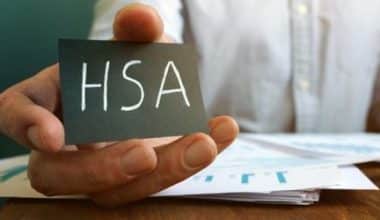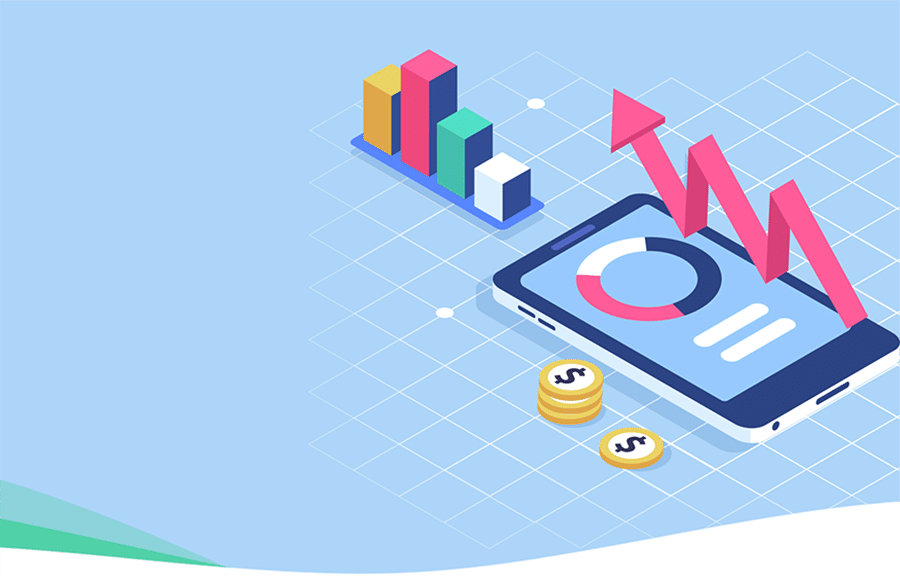To keep an accurate record of your business account, you need to have a good and accurate means of keeping your records in appropriate reports. However, this article will help you to understand what the term general ledger is all about, what it is for, how to employ it in keeping financial records of business accounts. Thus, we will look further in knowing the examples, jobs, and software you can easily assess this general ledger accounting.
General Ledger Accounting
A general ledger is the foundation of a system accountants do employ to store and organize financial data used to create the firm’s financial statements. General ledger accounting thus provides a record of each financial transaction; that takes place during the life of an operating company and holds account information that is useful to prepare the company’s financial statements. However, transactions are in notes from a source document, such as an invoice or bill; and trace down to the general journal which is also known as the general ledger account book. Typically, the general ledger accounts are however distributed into five sections within a plan of accounts. Thus, the five categories are assets, liabilities, owner’s equity, revenue, and expenses. Asset accounts normally include cash, record, expenses, and also fixed assets. Liability accounts may include accounts payable and receivable, notes payable, and also increased charges owe.
In general ledger accounting, business transactions are posted twice; thus debits are off by credits, assets by liabilities, and losses by income. However, in accounting for this type of system, the double-entry method is use for the accuracy of the account record.
What is General Ledger Accounting?
A general ledger accounting is thus, an account or record use to sort, store and summarize a company’s transactions. The general ledger is, therefore, the backbone of your accounting system. Learning how to use your general ledger accounting is important in understanding the financial health of your business, and it can take you a long way in your business.
These accounts is arrange in the general ledger with the balance sheet accounts appearing first; followed by the income statement accounts. The general ledger accounts serve as a closet for every transaction that is in the record and is a must for any business using double-entry accounting.
We have been talking about general ledger accounting and what it is all about, now we have to see some of its examples
Examples Of General Ledger Accounting
Here are some of examples of general ledger accounting balance sheet accounts; and how they are further arranged in the general ledger which includes: Asset, liability, and stockholders equity accounts. Under each account, we have various accounts which make them up.
- Asset Accounts: cash, accounts receivable, inventory, investments, land, and equipment
- Liability Accounts: Notes payable, accounts payable, accrued expenses payable, and customer deposits
- Stockholders’ Equity Accounts: Common stock, retained earnings, treasury stock.
Other examples of general ledger accounting in financial activities in your business are recorded in the general ledger. This activity includes:
- Deposits made to your bank accounts
- Checks are written to various businesspeople for operating expenses
- Payroll checks issued to your employees
- Receipts taxes paid to both state and federal agencies
- Sales activity and related accounts receivable activity
- Recording of payments received from customers and clients
- List changes such as receiving the product or adjusting inventory levels
- Bills received and recorded in accounts payable
- Any owner contributions to the business or owner withdrawals
- Any journal entries to record transactions such as interest and bank fees
General Ledger Accounting Jobs
There are some interesting jobs relating to general ledger accounting, which we will be seeing below:
#1. General Ledger Accountant
The job of a general accountant ledger is to support all elements of the accounting function; reconcile bank transactions on a daily, weekly, and monthly basis, and handle cash applications. Thus, they perform month-end close journal entries and Support month-end reporting package by performing analytics at various locations and researching any unusual variances, and preparing journal entries as needed.
In addition to this, this job in general ledger accounting actively participate in the month, quarter-end, and year-end close process making sure work is completed by the closing schedule and helping with annual audit requests
The Salary is ranging between $63,000 to $68,000 a year, they must have experience for two years before working.
#2. Production Accountant
A production accountant is one who exhibits a creative talent and has a passion for great telling stories and filmmaking that define Lucasfilm. The production accountant in jobs relating to general ledger accounting is responsible for working closely with the senior post accountant and the production finance executives to manage all aspects of our live-action productions while in development.
Their work includes administering payments, process, and trace payment for faculty and team members on overall deals with Lucasfilm including billing to productions. Similarly, they also manage accounts payable and receivable; prepare journal entries and reconciliations with the appropriate supporting documentation.
#3. Senior Accountant
They Evaluate and perform balance sheet reconciliations that are complete, accurate, and fully supported by appropriate evidence; however, they also work in hand with other departments to provide financial insights and relevant reporting, Identify and maintain the internal controls over accounting processes, and systems.
Similarly, they also participate in system implementations and process improvements by checking and analyzing systems and processes to identify areas for improvement, and drive optimization. Assist in the preparation of monthly, quarterly, and annual financial statements and footnotes.
For qualification, you must be 5+ years of experience in accounting and finance with complex structures
#4. Principal Accountant
For qualifications, you need a bachelor’s degree in accounting or finance, a minimum of 4 years of work experience in a computerized accounting environment, and also experience in a public education setting plus.
Essentional Function:
- Prepare external and internal financial reports on a monthly, quarterly and annual basis as required.
- Analyze and review financial data in peopleSoft on an as needed basis.
- Provide assistance to schools and central office divisions with their monthly reports as required.
- Maintain communications and discuss with staff in schools and the central office as well as external contacts.
- Revise and update policies and procedures as relates to financial reporting.
- Prepare and submit monthly, quarterly, and annual tax filings as required
- Reconcile general ledger accounts and prepare journal entries as required, including uploads in the financial system
- Prepare monthly reconciliations of banks accounts as required
- Fulfill other duties and responsibilities as assigned by supervisor or designee.
General Ledger Accounting Ledger Software
#1. GnuCash Review
GnuCash is free general ledger software, open-source software that offers both personal financial management and professional accounting capability. It is completely free, making it a great option for start-ups and micro-businesses with limited budgets.GnuCash includes excellent reporting options, with detailed asset and liability reports as well as a complete general ledger report. Reports offer little in the way of customization, but there are so many reports available, that customization will likely not be an issue.
#2. FreshBooks
FreshBooks is another general ledger accounting software, intuitive application dressed in an easy-to-use interface. it offers smaller businesses a great way to manage their general ledger. It also, currently offers four plan options, making it easy to transition to a more powerful plan. FreshBooks is designed for easy navigation, so even new users can easily find their way around.
#3. QuickBooks Desktop
QuickBooks Desktop offers excellent general ledger reporting options for small and growing businesses alike. Designed for the single-user office as well as growing businesses with multiple users, QuickBooks Desktop as one of the general ledger accounting software offers three plans to choose from. Originally it is designed for very small businesses, one of the biggest complaints that small business owners had was that they quickly outgrew the application.
Today, with QuickBooks Enterprise, small businesses can easily scale up to this very powerful edition of QuickBooks Desktop which supports up to 30 simultaneous system users. It is popular with small business owners for a reason. It offers affordability, a ton of useful features, easy system navigation, and scalability.
Report templates are also included in QuickBooks Desktop applications, and you can easily customize a general ledger report to include only the accounts you wish to view. Also, there are features of QuickBooks desktop, which includes
- Invoicing
QuickBooks Desktop offers the best invoicing software capability, allowing users to create a professional invoice for their customers. The Premier edition offers users a variety of industry-specific invoice templates including professional, product, and service invoice templates.
You also have the option to use QuickBooks Payments in order to get paid faster, including the ability to add a ”Pay Now” button to customer invoices for easy payment.
- Inventory
Good inventory tracking capability is available in all QuickBooks Desktop editions, with the ability to track all products sold, cost of goods, and inventory management, including inventory adjustments.
- Track Income and Expenses
You can easily connect all of your bank and credit card accounts to QuickBooks Desktop in order to easily manage and track your business expenses. Connecting your bank accounts also makes bank reconciliation a breeze, with the majority of entries automatically posted for you.
How Do You Write a General Ledger?
Divide each account (such as an asset account) into two columns when creating a general ledger. Your debits should be on the left, and your credits should be on the right. Your assets and expenditures should be placed to your right on the ledger. On the right side of the page are your liabilities, equity, and revenue.
What Is a General Ledger Used For?
A general ledger is used in accounting to record all of a company’s transactions. Transactional data in a general ledger is classified as assets, liabilities, revenues, expenses, and owner’s equity.
What are the 4 sections in a general ledger?
The chart of accounts, financial transactions, account balances, and accounting periods are all included in general ledgers.
What Is Debit and Credit in Ledger?
In double-entry accounting, debits and credits are entries made in account ledgers to record changes in value caused by business transactions. A debit entry in an account signifies a transfer of value to the account, whereas a credit entry signifies a movement of value from the account.
Why Is It Called a General Ledger?
For each account in an organization’s chart of accounts, a ledger account is established and classified into account categories such as income, expense, assets, liabilities, and equity; the general ledger is the collection of all these accounts.
What Comes First in Ledger?
For both debits and credits, the date, specifics, and amount are entered in the T-account format of the ledger. Almost always, ledger accounts begin with an opening balance. Typically, the initial balance for balance sheet accounts is the closing balance from the preceding period.
What Is a GL Reconciliation?
Accountants do a general ledger reconciliation to confirm that the information in the general ledger is accurate. The majority of accountants do general ledger reconciliations during: Monthly Closeout. Annual Close.
- GENERAL LEDGER: Easy Templates, Examples And all you need (+ Free pdfs)
- General Partnership Definition: Taxes, Liability & Agreement
- ACCOUNTING PROCESS: Understanding the 8 Steps in the Accounting Cycle
- ACCOUNTING CYCLE: What is Accounting Cycle & All you Need
- QuickBooks Accountant: Basic Guide for Optimal Results (+ Quick Tools)






